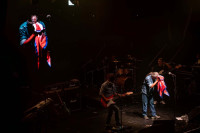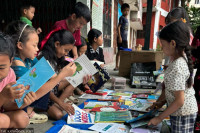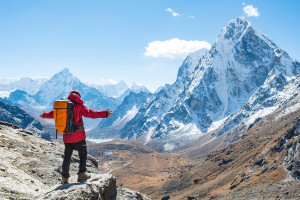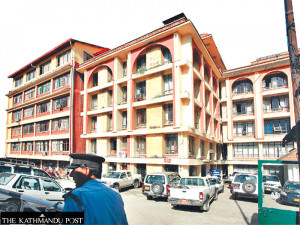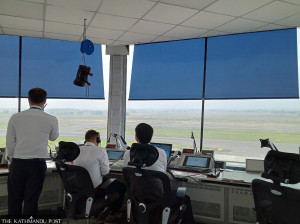Entertainment
Stories around a light bulb
The light bulb stands as a symbol of many things for the people photographed with it; for the artist herself, it was her own portable source of light—something she brought along with her.
Rachana Chettri
Perhaps this symbolism is one reason why prayer flags are such popular subjects for photographers. Wherever there is an exhibition on Nepal or the Himalayas, one is bound to find at least one image of prayer flags rustling
in the wind. Perhaps this ubiquity is why I regard photographs with
prayer flags with twice the scrutiny with which I would view any other picture. Perhaps the use of prayer flags in Ana Alvarez Ribalaygua’s Story of a Light Bulb is what makes it somewhat difficult to add up for me.
Story of a Light Bulb consists of 108 photographs taken by the Spanish multimedia artist–who recently spent
one month at the Kathmandu Contemporary Art Centre (KCAC) as an international artist in residence–in various parts of Nepal and Bhutan. There are faces from Thimpu’s monasteries, from Kathmandu’s many temples and its numerous boarding schools; idols in holy shrines, a lotus in full bloom, and people simply getting along in life.
The portraits are arranged to form parts of a long thread of prayer flags that circumnavigates the walls of the KCAC exhibition space in Patan. The children, women and men are as distinct as their reactions to the battery-operated light bulb Ribalaygua has asked them to pose with. While some hold it nonchalantly, perhaps continuing to do what they were doing before the photographer approached them, others adjust into self-conscious poses and expressions. The light bulb stands as a symbol of many things for the people photographed with it; for the artist herself, it was her own portable source of light–something she brought along with her upon learning of Nepal’s loadshedding malaise. For many of the subjects of her photographs, the bulb seems to be a source of intrigue, even entertainment. It becomes a medium for self-expression for some, a cumbersome object for others.
The artist might be attempting to tie the different portraits together in one long sequence of consciousnesses connected to each other–presenting them almost as scripts printed over the numerous pieces of cloth that make up a string of prayer flags. But I, personally, could not see the significance of the arrangement. The flags look pretty (as they always do), but they distract the eyes from the images that, in my opinion, should have been the centre of the exhibition. The little light bulb Ribalaygua carried with her from
Spain to Nepal to Bhutan is lost somewhere in the colour and character of the arrangement.
The exhibition is on till May 25




 19.42°C Kathmandu
19.42°C Kathmandu


